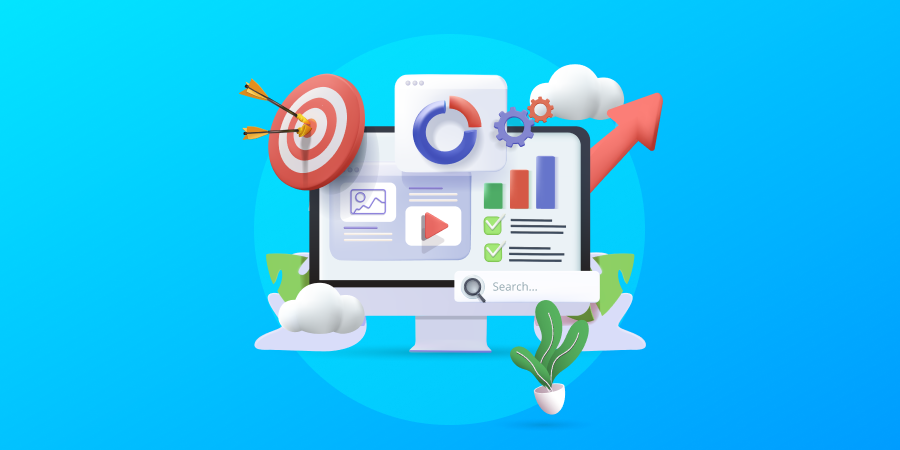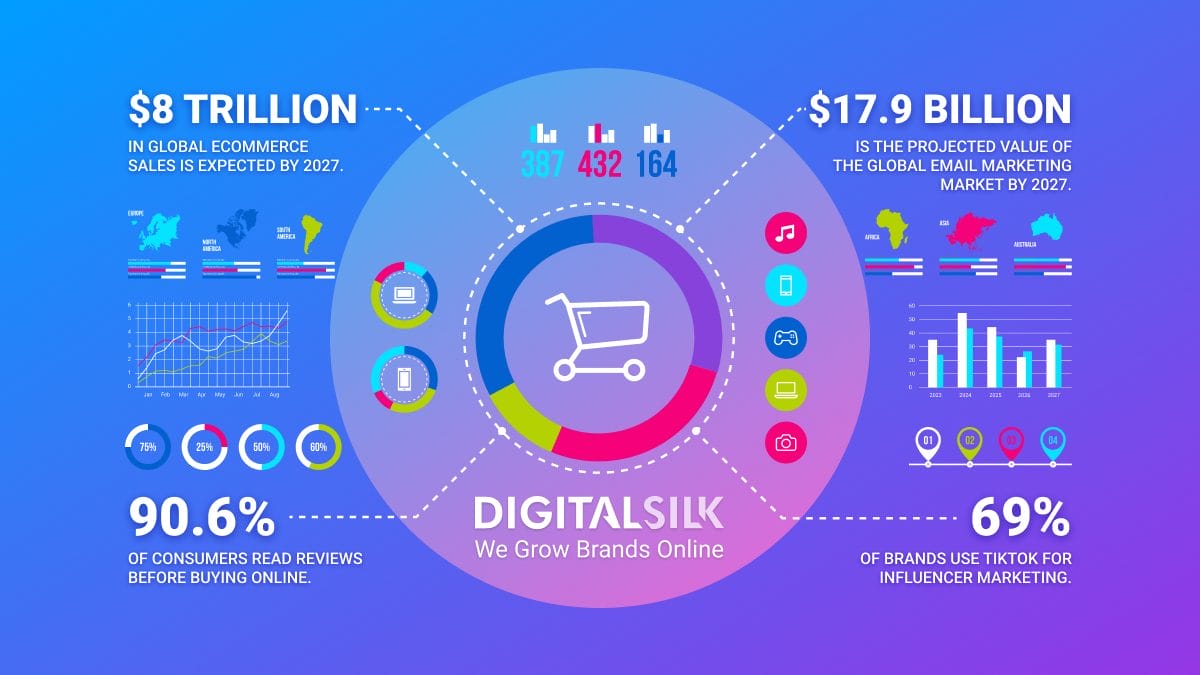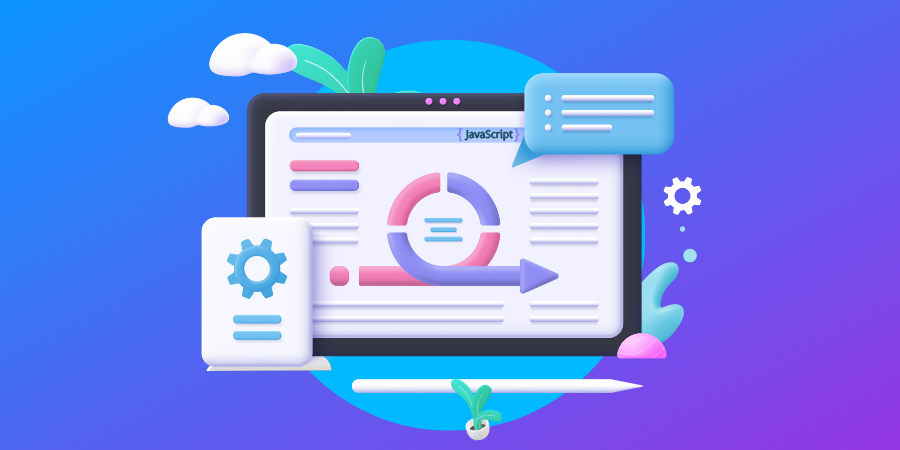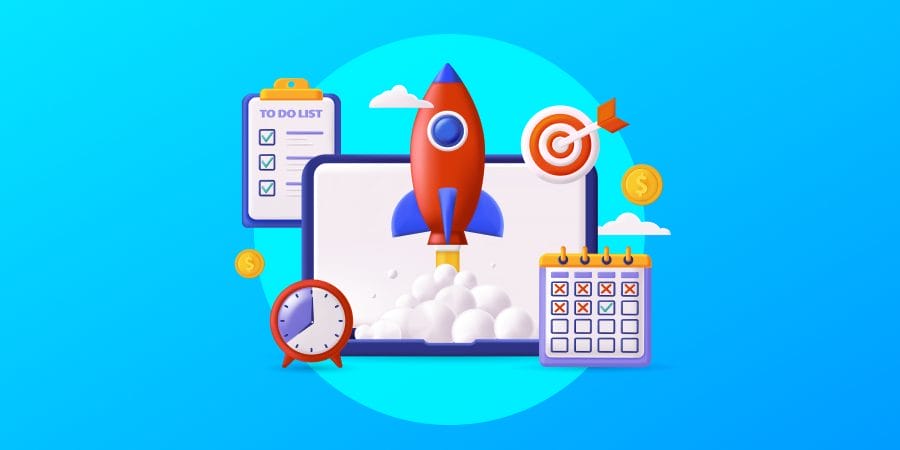Did you know that 88% of online consumers are less likely to return to a website after a bad experience?
Think of your website as your best salesperson, available 24/7. If your site is slow to load, your navigation is difficult, your branding elements are inconsistent and your content isn’t valuable, even your best salesperson doesn’t stand a chance at driving conversions.
So, exactly how do you plan a website to ensure your visitors have a positive experience?
We’ll explain how to plan a custom website project in 10 steps, straight from the mouths of our experts.
Keep reading for a downloadable checklist to help you plan your project!
Digital Silk builds custom websites. Request a quote
What Is Website Planning?
Website planning is the process of creating a roadmap that helps inform the design and development process, ensuring that the final outcome meets users’ needs and achieves the goals set for the site.
Website planning allows you to set clear objectives upfront, identify your target groups’ needs, allocate resources to minimize delays and costs and reduce the need for revisions and redesign.
How To Plan A Website
Let’s jump right into it! Below we’ll show you the steps our Digital Silk experts take to plan a custom web design.
Speak with our experts. Set Up A Consultation
1. Document Your Goals & KPIs
Start your web planning process by detailing the objectives you wish to achieve with your website. Why are you (re)designing the website? Define the specific goals for your website design or redesign project and how you plan to measure them.
If you already have a functioning website, review its current performance and define areas where there’s room for improvement. Write down specific SMART goals, i.e. Specific, Measurable, Attainable, Relevant, and Timely.
These goals might include:
- Generating more traffic
- Generating leads
- Boosting online sales
- Decreasing your bounce rate
- Increasing your mail subscribers
- Improving customer satisfaction
- Improving conversion rate
KPIs to measure the success of your goals might include:
- Organic traffic
- Traffic by source
- Search rankings
- Dwell time
- Interactions per visit
Once you have specific goals laid out and metrics to determine how to measure their success, you can start strategizing actionable ways to achieve them.
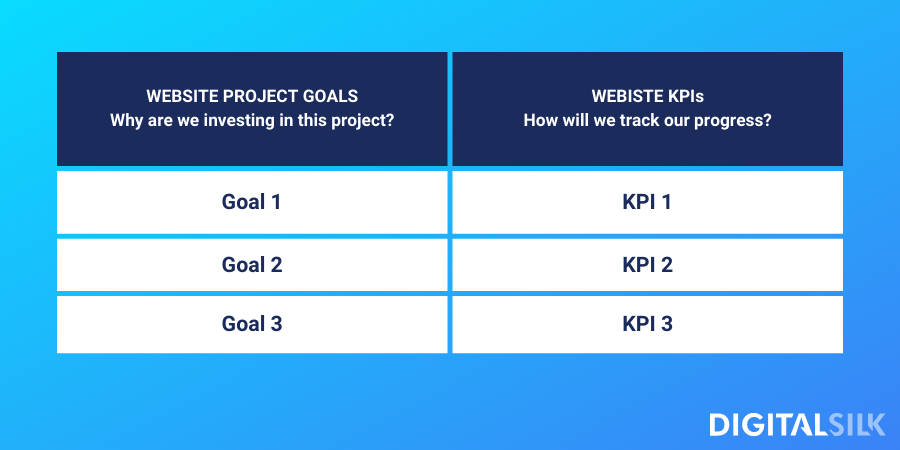
Planning a web redesign project? Check out our complete website redesign RFP guide.
2. Define Your User Personas
To better understand what your users need and expect, create personas for your target groups. List as many details as possible to create personas for each target segment, including:
- Gender
- Age
- Education
- Marital status/Kids
- Professional development story
- Position and experience within the organization
- Reporting line
- Frustrations
- Needs
- Expectations
- Likes/Dislikes
- How do they approach the website planning topic
- Corporate subscriptions and publications
- Brand listening tools to identify public sentiments
- Personal traits
- Politics & Economics
- Entertainment preferences
- Personal pain points and anxieties
Creating user personas will allow you look at your website through the eyes of your users and clarify your website requirements in terms of messaging, user journey and design.
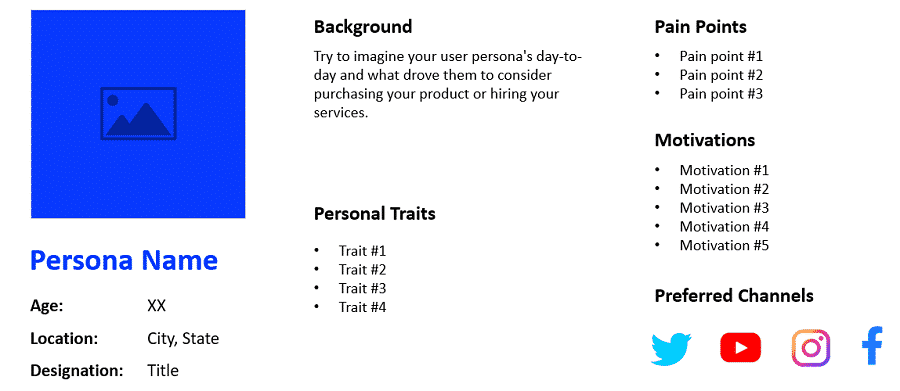
3. Analyze Your Direct Competitors
List and carefully analyze between two and five of your top competitors. Look beyond their user interface and review their:
- Sitemap
- Content strategy
- Messaging
- Key landing pages
- SEO efforts (use tools such as SEOMinion and Ahrefs to observe title tags, meta descriptions, image titles and more)
The purpose of this task is to research your competitors’ strengths and weaknesses compared to your own, find a gap in the market and optimize your business strategy.
Discuss your competitors’ offerings, how they differ from yours, what makes them stand out and be liked by customers.
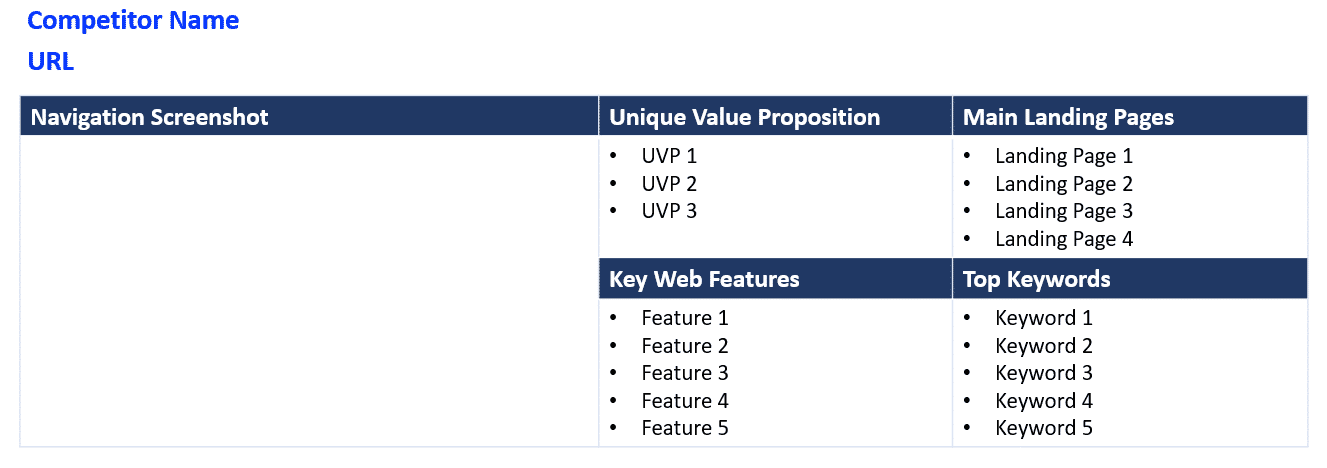
4. Find Inspiration Websites
Visit and analyze your favorite websites, whether they’re in the same industry or a different one.
Look beyond the user interface. Focus on the conversion funnel and user journey that navigates (or fails to navigate) visitors to various conversion points.
Take note of their messaging, images, colors and typography and consider which elements work for the brand vs. against it.
5. Create A SEO Plan
Find viable keywords, particularly for your key landing pages, using keyword research tools such as SEMrush.
Keyword research can (and should) impact your sitemap as it will tell you what your audience is looking for, what terms they are using to look for your services, and what type of information they want to find on these service pages.
If you are redesigning your website, your SEO plan should also contain details such as redirects, which are key to retaining your current SEO value.
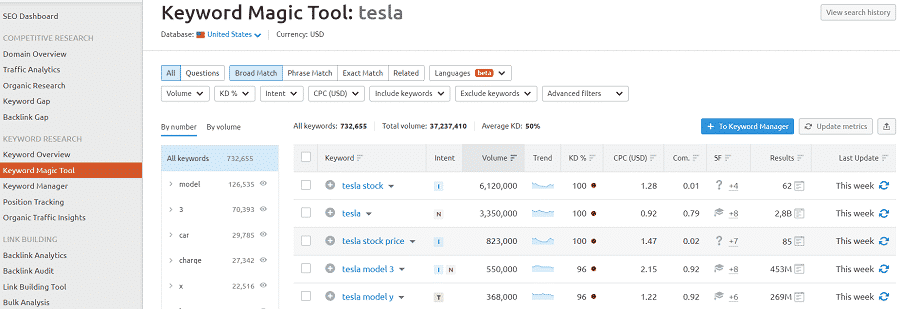
6. Create A Sitemap
Creating a sitemap will help you organize your website’s structure and decide what pages, and in what order, to display to your users.
It can also help your designers and developers understand your website requirements.
Here’s an example of how your sitemap might look:
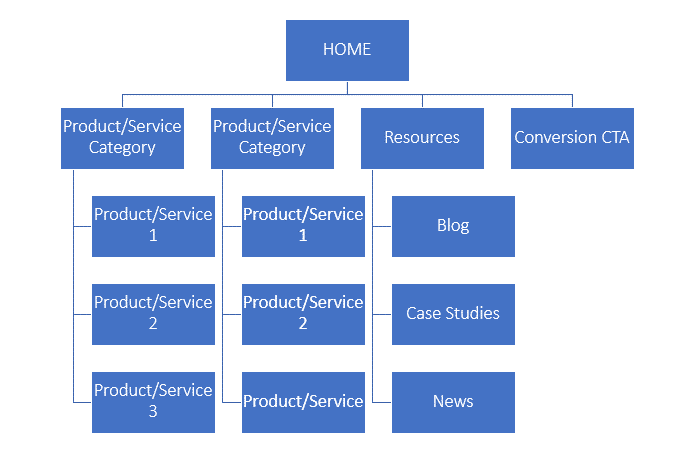
7. Map Out User Journeys
The user journey is the path your users take to travel through your website. When planning your sitemap and landing page content, determine where your user should go, from one page to the next.
CTAs are key to building effective user journeys. Each page should have several diversified CTAs that help the user continue their journey through your website, finding more relevant and valuable information until they are ready to convert.
8. Plan Landing Page Content
Never design a website before outlining the key information and content your landing pages should have. Messaging is more important to the user experience than wireframes and creative designs.
Communicate your message clearly from the moment your users land on your homepage, by highlighting the value your business offers to your target audience.
Focus on your consumers’ needs, expectations and pain points. Show what makes you different and how you can make the life of your user better, easier, more comfortable, more interesting, more attractive, etc.
Plan CTAs to lead your users to different stages of the conversion funnel keeping them engaged and willing to explore more.
9. Create A Design Brief
Your design brief should include your brand style guide to ensure the designer accurately translates your visual identity to your website. Details to add to your design brief include:
- Logo variants and guidelines
- Color palette
- Typography
- Iconography
- Image treatment
Your design brief should also include references to the special design elements you’d like to feature on your website, such as:
- Modules
- Roll-over effects
- Forms
10. Define Your Budget
The reason why we listed your budget as the last step is because the cost of your website will depend on your requirements. Here’s a useful guide to determining the cost of your website:
To determine your budget:
- Define the purpose of your website (selling advertising space, lead generation, software integration, etc.)
- Define whether you need a template design or a custom website design
- Create a list of must-have features and functionalities
- Research agencies and meet with your top considerations to transparently discuss your needs and budget
- Find Your Platform (CMS)
If you opt for a templated website, you can choose a content management system (CMS) from one of the many options available, such as WordPress, Joomla or Magento.
Free Website Planning Template
Email the download link to:
Mistakes To Avoid When Planning A Website
While planning a new website is exciting, there are a few common mistakes that can cause bumps in the road if not carefully avoided.
Here are some common mistakes to avoid:
- Ignoring user persona research: Failure to understand the needs and expectations of your target groups can result in a website that doesn’t resonate with your users, leading to poor engagement and conversion.
- Failing to organize your content: Excessive or disorganized content can overwhelm your visitors and impact their interaction with your website.
- Overcomplicating navigation: Complex and confusing navigation can make it difficult for your visitors to find the information they’re looking for, which can increase the bounce rate.
- Lacking visible and clear CTAs: If you don’t have prominent and clear CTAs, your visitors may be reluctant to act, which will hinder conversions.
- Failing to implement SEO best practices: Failure to implement an SEO strategy will affect your ranking on search engines and in turn, your visibility and traffic.
Planning A Website With A Web Design Agency
The best way to get an agency on board with your website project is to submit a request for proposal (RFP).
An RFP is a document created by an organization to select offers from potential service providers for the execution of a specific project, outlining the project’s scope, requirements and evaluation criteria.
An effective website RFP will allow you to reach agencies that are interested in working on your project, so you can find the agency that’s right for you.
Digital Silk is a full-service agency collaborating with clients across diverse industries. Addressing each client’s unique goals and market dynamics, we craft innovative strategies and execute them from start to finish.
If you decide to work with our award-winning team at Digital Silk, here’s what you can expect:
- We are both experts and consultants: From project managers, digital strategists and designers to backend and frontend developers and content specialists, our seasoned professionals with years of experience plan your website based on thorough research. We plan every aspect of your website to help you increase your online visibility, boost brand awareness, provide better user experience and improve your conversion rates.
- We serve as a long-term partner: As a full-service agency, we can handle all of your digital needs under one roof, from branding and digital strategies to website design and development, digital marketing and mobile app development.
- We offer full transparency: We communicate and report on task progress during regular meetings, to ensure strict time tracking and transparent execution.
- We have vast industry knowledge: From booking forms on your hotel website to product catalogs with spec sheets on your manufacturing site or testimonials on your family law or financial advisor website — we base your custom design on industry insights to increase your conversion rates.
Interested in seeing some of our work? Check out the new website we recently created for field management service software company, FieldEdge:
Key Takeaways On Website Planning
Website planning is a significant undertaking, but it doesn’t have to be confusing or difficult. The ten steps our experts outlined above can help you through the process, step-by-step.
Your website plan should include:
- Goals and KPIs
- User personas
- Direct competitors and their performance
- Websites to use as inspiration
- SEO plan
- Website sitemap
- User journey map
- Landing page content
- Design brief
- Budget
While you can go it alone, a professional agency will help you through every step of the way and deliver a solution based on your needs, goals and budget.
At Digital Silk, our industry-leading experts create custom websites that improve visibility, engage target audiences and increase conversion.
"*" indicates required fields




